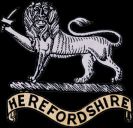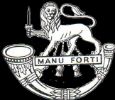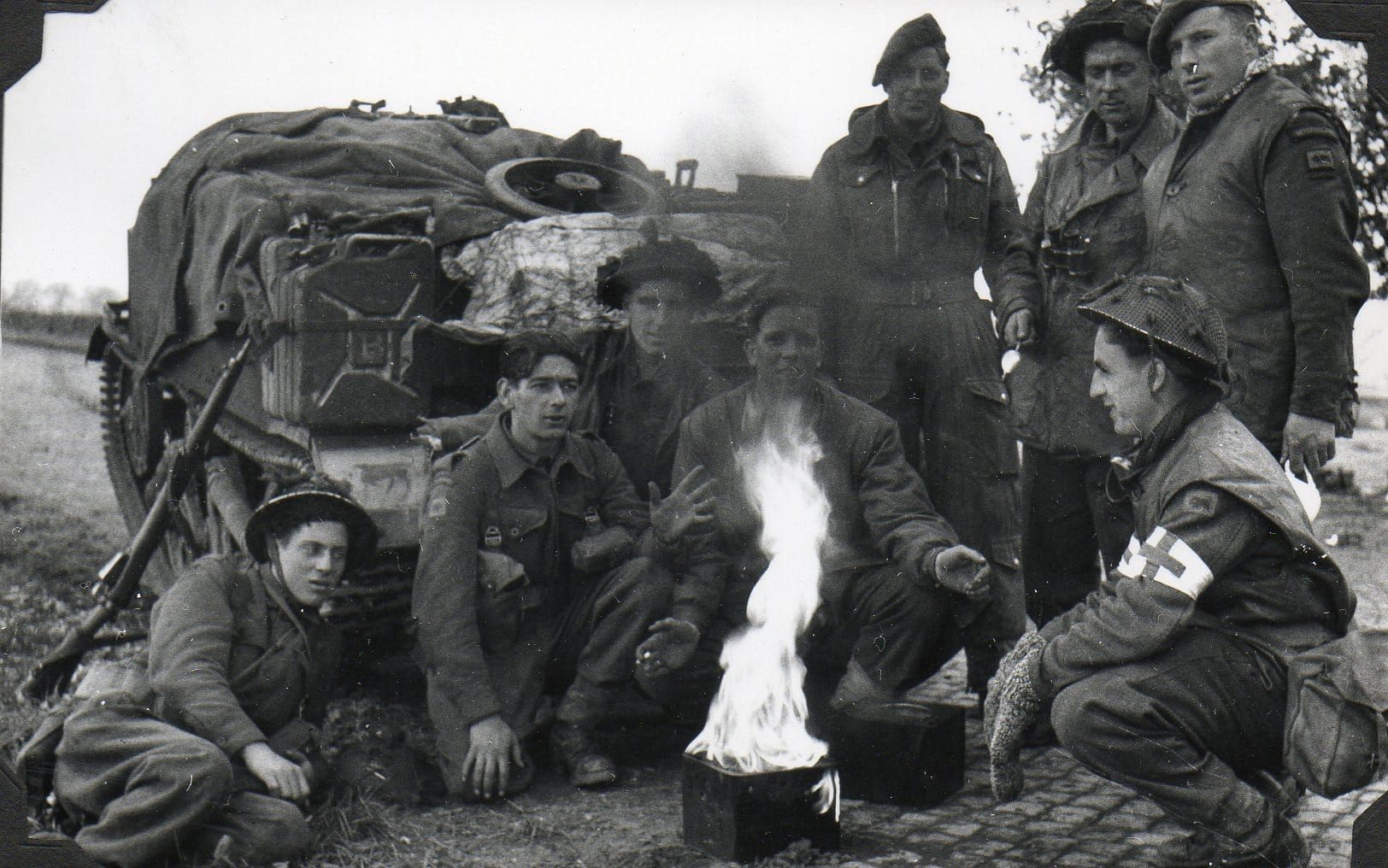
** Read the month by month account of the Battalions exploits after landing in Normandy; scroll to the bottom of the page and view 1st Battalion War Diaries **
The Second World War
Introduction
The Road To War
The 1920s and 1930s had seen Europe and much of the rest of the world survive through the long deep shadow of the First World War. That war had signalled the end to the old regimes, empires (Germany, Russia, Austro-Hungary & Ottoman) had fallen, nationalism, political extremism, communism and fascism had grown and were seen as a threat by many. The War had left millions dead and wounded in body and mind and millions of families were still suffering. Extreme economic depression had exacerbated all of these providing an environment allowing some to grow and making the effect of others even worse.
The 30s had seen the growth of fascism in Spain, Italy and Germany, and the communism in Russia; movements existed in the UK supporting these.
The remilitarisation of Germany, the civil war in Spain (won by gen Franco) (supported by Germany) and the Italy expansionism (under Mussolini) in North Africa (in 1935 Italy had invaded Abyssinia) all caused considerable unease in Britain. The actions the League of Nations took had no effect, and many clung to the hope that the horrors of the First World War meant another global war was impossible, but this approach possibly just encouraged both Hitler and Mussolini in their ambitions.
In Germany Adolf Hitler became Chancellor in 1933 and established a totalitarian one party state. He commenced remilitarisation and an aggressive foreign policy. German troops marched into Austria in March 1938 and Czechoslovakia in September. It now seemed inevitable that war was coming and despite the British Prime Minister’s (Neville Chamberlain) peace mission to Munich and the apparent ‘peace in or time’ agreement Germany continued her aggressive policies.
Britain realised that the economic situation had left the Forces poorly prepared and a policy to recruit and re-equip was put in place. As part of this plan the Territorial Army was doubled in size in 1938. There was a fear of mass air attach, possibly involving gas and Air Raid precaution (ARP) procedures were put in place, family and collective air raid shelters were built and everyone issued with a gas mask.
There still remained a considerable anti war movement in the UK preferring a policy of appeasement, but many recognised the threat and the abhorrent nature of Hitler’s Nazi Party and supported re-armament; many volunteered for service with the expanded TA.
If Germany was to wage war in the West (against France) the it was clear that this only be effective if they were not engaged on the Eastern Front and accordingly Germany signed a Non-Aggression pact with Soviet Russia.
Germany continued her aggressive moves on her Eastern Borders and Poland was under threat. Despite political moves to defuse the situation German troops marched into Poland at the end of August.
Patience and political efforts had been exhausted and following that invasion Britain declared war on Germany on 3 September.
This second conflict in less than 30 years would eventually spread and touch almost every corner of the globe.
Called To Duty
1939 - Annual Camp and Mobilisation
The Second World War effectively started for the Herefordshire Regiment in April 1939 when the Territorial Army (TA) was doubled in size, this was achieved by each formation and unit forming a ‘duplicate’ organisation. Consequently the Herefordshire Regiment formed a 2nd Battalion (Bn). The 1st Battalion remained part of the 53 Welsh Division and the 2nd Bn became part of 38 Welsh Division.
This was a realistic, practical and efficient way of managing increased recruiting numbers and also expand the country’s military capability, both in answer to the increased threat of war posed by Nazi Germany.
The make up of the 2 Bns was:
1st Battalion
Commanding Officer - Lt Col LF Sloane-Stanley
New Company ** Old Company
HQ Hereford ** HQ Hereford (part)
A - Hereford ** A - Hereford (part)
B - Kington (platoon at Eardisley) ** D - Leominster (Kington Pl)
C - Leominster (platoon at Weobley) ** D - Leominster
D - Leominster (platoon at Leintwardine) ** D - Leominster
2nd Battalion
Commanding Officer - Lt Col NG Blake MBE
New Company ** Old Company
HQ Hereford ** HQ Hereford (part)
W - Hereford ** Hereford (part)
X - Ross ** B Ross
Y - Ledbury (platoon at Colwall) ** C Ledbury
Z - Bromyard ** D - Leominster (Bromyard platoon)
Lt Col NG Blake MBE was appointed to command 2nd Bn. He formerly commanded B Company (Ross) of the original 1st Bn, and he received his MBE in the 1939 New Year's Honours List.
The next months were spent reorganising and becoming familiar with the new organisations and new personalities. Recruits continued to join as the war clouds grew darker and closer.
In August/September the Regiment attended annual camp at Leeming (Weston Super Mare), the Regiment occupied the camp for 4 weeks with each battalion completing a 2 week period ‘under canvas’. The 2nd Bn were second and reports are of a very wet time (see War Diary 4 September) and wellington boots being issued!
Tension was building and the likelihood of war seemed inevitable. Military and civil defence instructions were being issued and the TA was no exception. See the 1st Bn War Diary – which was started on 28 August 1939 – a clear indication that war was expected. Unfortunately the content of the signal/telegram traffic is not known, but the urgency and subject matter are easily seen. Code words (Hastings, Allenby, Plumer, Clive, Roberts) were presumably associated with actions to be carried out. Some Bn staff also returned to Hereford – clearly to make preparations for mobilisation.
Whilst the 2nd Bn was at camp Britain declared war on Germany and the TA was mobilised, with members of the TA receiving their embodiment notices and being ‘called up’ for full time service.
After mobilisation the 2 Battalions went their separate ways. Their separate ‘story’ continue in posts covering the period 1939 to June 1944, their War Diaries are reproduced in full accompanied by additional narrative.


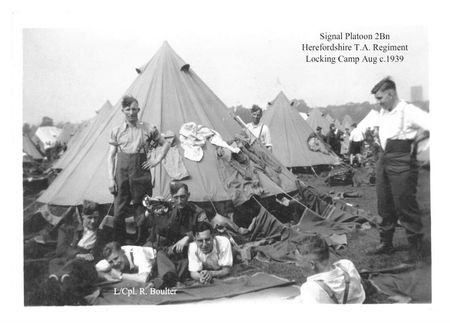
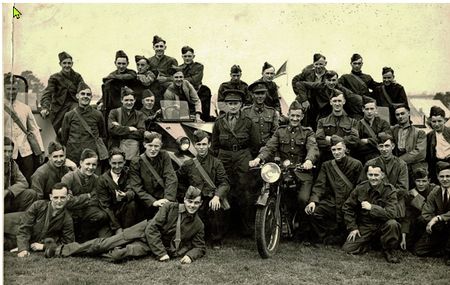
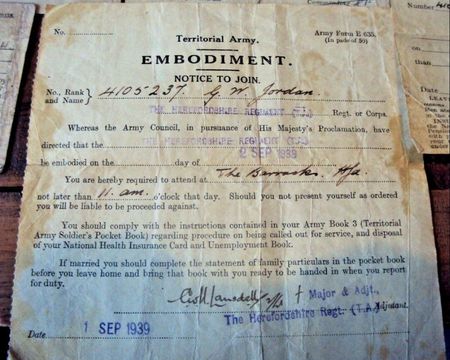
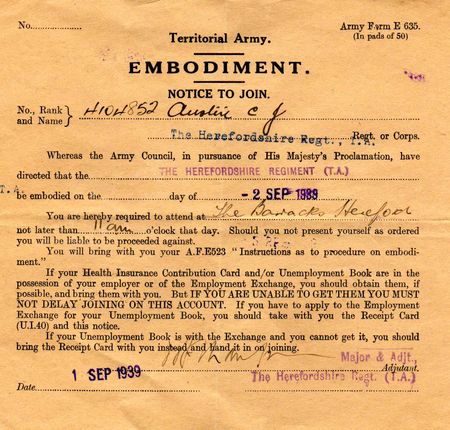
1939 - 1944
World War 2 - The Regimental Story
The History of The Regiment is told in separate posts (see pick list below).
The period 1939 - June 1944 is shown for each Battalion and their War Diaries are reproduced in full together with additional information.
The 2nd Bn was disbanded in Jul 1944.
80 YEARS ON
May 2024 sees the start of an exciting series of posts for the Museum’s website. The curator is preparing an account of what the Regiment was doing 80 years ago. It will be published monthly, under the post for 1st Battalion War Diaries, and will cover the period May 1944 (the immediate build up to D Day) to later Summer 1945 when the Battalion was placed into suspended animation.
The account will be based on the War Diary and include contemporary accounts, reminisces and photographs.
The following reference material has been used and is quoted:
A Soldiers War – Maj Gen Churcher
Taurus Pursuant – A History of the 11 Armd Div
The Black Bull – Patrick Delaforce
Charge of the Bull – Jean Brisset
Just a Walk in the Sun – Bob Price
I’ve sent home socks for darning - Peter Andrews
Account - Hesketh
Account - Ken Crockford
Research - Ray Griffiths
Account - Maj Wardman
World War 2
Summary
Herefordshire and The Herefordshire Regiment contributed fully to the war effort. Although the county was not in the front line and was not subject to the Luftwaffe blitz, it did suffer some minor bombing.
On the Home Front the Royal Ordnance factory at Rotherwas produce munitions and became a key employer in the county. Troops were stationed in the county, in the early years British troops but late overseas troops especially the Americans which set up camps prior to D Day which after D Day became military hospitals. The RAF set up 3 training airfields in the county.
This ingress of the military, rationing and the absence of many men with the forces impacted on every family.
Men, and later women were all called upon to do ‘their bit’, in addition to their daily jobs many men joined the Home Guard, women were employed in industry and on ‘the land’ as part of the Women’s Land Army at a scale which had not been seen before. Every village and town had its Home Guard, 6 Battalions existed in the county and when the Home Guard was stood down in December 1944 there were over 6000 Home Guardsmen.
Many men and women joined the forces, many voluntary but later by conscription. They served at sea, in the air and on land in all parts of the world.
The County’s own Regiment, The Herefordshire Regiment was only a Territorial Regiment and had its 2 Battalions had been mobilised in 1939, it had received volunteers and conscripts throughout the war. The First Battalion had served in Northern Ireland and then become part oof 11 Armoured Division training for ‘the invasion’. After landing over the beaches of Normandy they had fought in the breakout from Normandy, the rapid armoured advance across Northern France, the liberation of Antwerp and then the bitter fighting through Germany to end the war on the Danish Border, before taking part in OP BLACKOUT the final operation of the war.
The Second Battalion had been allocated to UK Home Defence, and as a unit never saw overseas service although many of the individuals did transfer to operational units. The Battalion was eventually stood down shortly after D Day when the men were transferred to units in France needing reinforcement and replacement for casualties.
The Regiment suffered at least 271 fatalities, this includes some who were serving with other units but does not include that that had transferred to other units. Not all fatalities were battle casualties some died as a result of accident or illness.
The Regiment was awarded 4 Distinguished Service Orders, 2 MBEs, 11 Military Crosses, 3 Distinguished Conduct Medals, 25 Military medals plus Mention in Despatches and Foreign Awards.
The Home Guard also suffered at least and fatality whilst on duty and received at least 2 MBEs and one British Empire Medal.
The Regiment was awarded the 10 Battle Honours to be borne on The Regimental Colours: Odon, Bourguebus Ridge, Souleuvre, Falaise, Antwerp, Hechtel, Venraij, Hochwald, Aller and North West Europe 1944-45.
